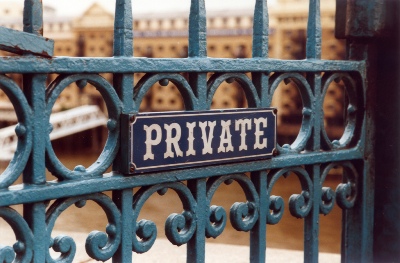
Since day one, bloggers, social media experts, and just about anyone with an opinion has been very quick to pass judgement over Google+’s future. The social network hasn’t even closed in on 3 months and already many are more than happy to predict its early demise. A recent conversation I had on Twitter about this topic got me thinking about all the ingredients that Google+ currently has going for it, and since they could clearly not be limited to a 140 character update, I figured I’d blog about it instead.
Since Google+ launched Google’s stock has increased by 30%, which translates into an extra $45 billion in the company’s valuation, so it must be doing something right. The vibrant micro-communities are no different from the early adopters on Facebook and Twitter. Each network started with geeks, cliques, and then they went mainstream. Google+ is clearly in the Geek and Clique phase, and in private beta at that.
Despite the fact that we are still in its earliest days, it would seem that Generation Y’s 140-character character span also skews our perceptions of time. Google+ has shown a lot of promise, and it will take longer than 3 months for it to realize its full potential.
Public posts are not a measure of activity
A lot of the statistics that are being bandied around are based only on public posts. The only entity that can really tell us anything about Google+’s activity, or lack thereof, is Google itself. Private posts will not show up in any third party statistic reports and so it instantly skews the results. Statistics released by third party applications like ManageFlitter can only go so far in giving us any insight into how people are using Google+. According to ManageFlitter’s statistics, Google+ public posts have dropped by 41% in the past two months. While it could indicate a decrease in Google+ usage, it could just as easily indicate a choice to have more control over who sees your posts.
 A quick look at the 20 most recent items shared on Google+ in my incoming posts, shows 8 private posts, 8 public posts, and 4 posts shared with extended circles. While, of course, this is not necessarily reflective of the overall usage patterns on Google+, but it definitely does remind us that not everyone is using Google+ as a public tool to share information. Regular users of Google+ will also find that their follower count is constantly increasing.
A quick look at the 20 most recent items shared on Google+ in my incoming posts, shows 8 private posts, 8 public posts, and 4 posts shared with extended circles. While, of course, this is not necessarily reflective of the overall usage patterns on Google+, but it definitely does remind us that not everyone is using Google+ as a public tool to share information. Regular users of Google+ will also find that their follower count is constantly increasing.
Let’s also not forget some of the more interesting statistics about how content is shared on Twitter. Earlier this year a study revealed that less than 1 percent of Twitter users produce half its content. This would indicate that a large part of Twitter’s success is dependent on a select group of people who are particularly active. There is absolutely no doubt in my mind that a similar group exists on Google+, as I’ve already written before.
A site like Social Statistics also sheds light on how much interaction exists on Google+. If public posts have in fact decreased so dramatically, let’s not ignore the fact that interaction on the existing public posts continues to grow. The most popular posts get anywhere up to 1000 +1’s, 1000 shares and 500 comments, so we know for a fact, someone out there is using Google+.
Your data isn’t stuck inside Google+
 Google has the luxury of looking at the mistakes that Facebook and Twitter have made, to make sure that it doesn’t go down the same path. Google makes it easy to get all of your data out of the site and onto your computer with Google Takeout. It would seem that Facebook has made every effort to lock your content into the social network and Google going in the complete opposite direction certainly gains it points.
Google has the luxury of looking at the mistakes that Facebook and Twitter have made, to make sure that it doesn’t go down the same path. Google makes it easy to get all of your data out of the site and onto your computer with Google Takeout. It would seem that Facebook has made every effort to lock your content into the social network and Google going in the complete opposite direction certainly gains it points.
Facebook and Twitter didn’t happen overnight
Facebook and Twitter didn’t happen overnight. Why are we expecting Google+ to be any different? Yes Google+ has the luxury of coming into the market when social networks are already a major part of our daily lives. And yes Google+ is coming in with one of today’s biggest tech companies at its helm, but that doesn’t mean that the success (or failure) of any of its products should be expected overnight. Facebook and Twitter’s tipping point took at least 3 or 4 years to reach. While the current climate is very different from Facebook and Twitter’s earlier launch, it still does seem a little presumptuous to expect Google+ to get to the same point as its competition in 3 months.
The public API is on its way
Google just released the public API, and only just partially at that. We all waited with baited breath for the Google+ Android and iPhone mobile apps. The existence of third party apps could prove to make a huge difference for Google+’s popularity, and its presence across the web in a hundred and one different forms. Third party apps have turned Twitter into a reminder service, a calendar app, a traffic alert system and more. We’ve already explored how Google+ can be used by photographers, journalists and more. With a public API, it’s uses instantly increase.
Google product integration
Google has just started to integrate its products, as we’ve seen with YouTube, and most recently with Google Maps. Google+ is just getting started. It hasn’t harnessed the power that Google Apps gives it with businesses, hasn’t taken advantage of integrating the service with Google Voice, Alerts, Calendar and Translate, not to mention the collaborative features in Google Documents. The biggest Google service that has yet to have any serious integration with Google+ is search, and once it’s up and running, it could be a major game changer.
 More importantly, Google has its own browser, which is something Facebook and Twitter can’t boast. Even a third party attempt at a social network browser, namely Flock, pretty much flopped. Google already has Chrome, a browser which has over 20% of the browser market share, and growing. The ability to integrate Google+ into the browser beyond third party extensions will put the social network front and center for every Google Chrome user. And let’s not forget that any Google user now has the omnipresent Google bar at the top of any page they visit, reminding them that Google+ is a click away.
More importantly, Google has its own browser, which is something Facebook and Twitter can’t boast. Even a third party attempt at a social network browser, namely Flock, pretty much flopped. Google already has Chrome, a browser which has over 20% of the browser market share, and growing. The ability to integrate Google+ into the browser beyond third party extensions will put the social network front and center for every Google Chrome user. And let’s not forget that any Google user now has the omnipresent Google bar at the top of any page they visit, reminding them that Google+ is a click away.
Google also has Android at its side, giving it an instant platform for all its mobile and tablet needs. Now while Twitter has the huge advantage of being Apple’s social network of choice, Android’s numbers are on the rise, up to 48% smartphone market share, and that can only be a good thing for Google+, especially if the Motorola acquisition turns out to be worthwhile.
Private beta
How many products can boast millions of members in their private beta, with many more still clamouring to get in. Now we don’t necessarily think the private beta is necessary anymore, but the fact remains that the service hasn’t even entered the public beta phase, so let’s at least wait until then before deciding whether or not Google+ is a lost cause.
Facebook is running scared
There I said it. It would appear that every single change that Facebook has made in the past few months has been in direct response to Google+’s features. Smart lists are clearly Facebook’s answer to circles, and the new subscribe feature, makes it easy to ‘follow’ people on Facebook who aren’t your personal friends. I doubt that Google+ is going to be the death of Facebook. In fact, if anything, Google+ is breathing life back into the social network’s features. At the end of the day, the real winner here is the user, and that’s always a good thing. But the very fact that Facebook is banging out these changes, one after the other, could be proof that the social network knows that it should be a little worried. If Facebook is doing all it can to ensure that its users don’t jump ship and land on Google+’s shores, then we have to at least admit that Google+ is on the right path.
At the end of it all, Google+ could always fall flat on its face. Wave and Buzz are two perfect examples of just how wrong Google can get it sometimes. At the same time, Google has far more successes under its belt. Whether or not Google+ will be one of those successes remains to be seen, but let’s at least wait longer a little longer than three months before we make up our minds.
Get the TNW newsletter
Get the most important tech news in your inbox each week.





